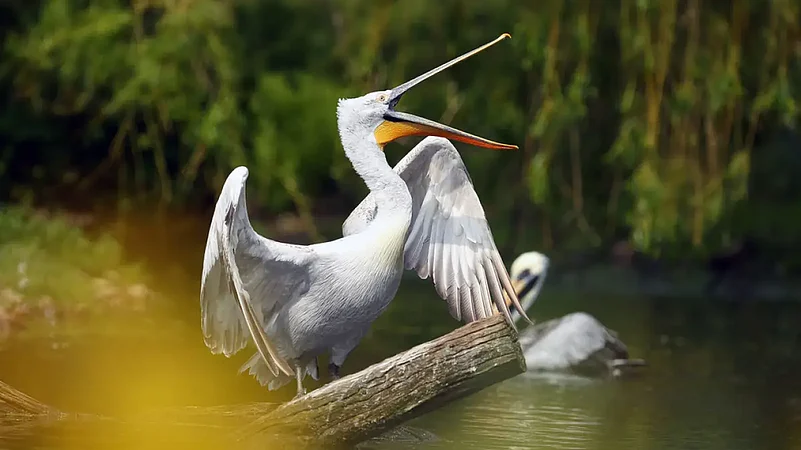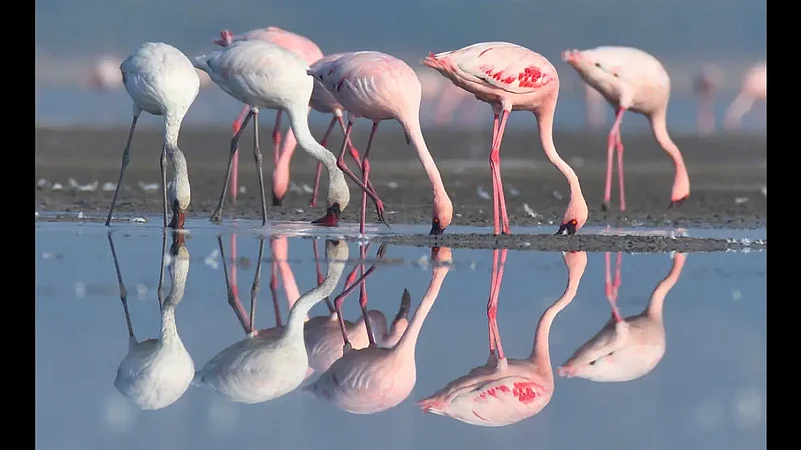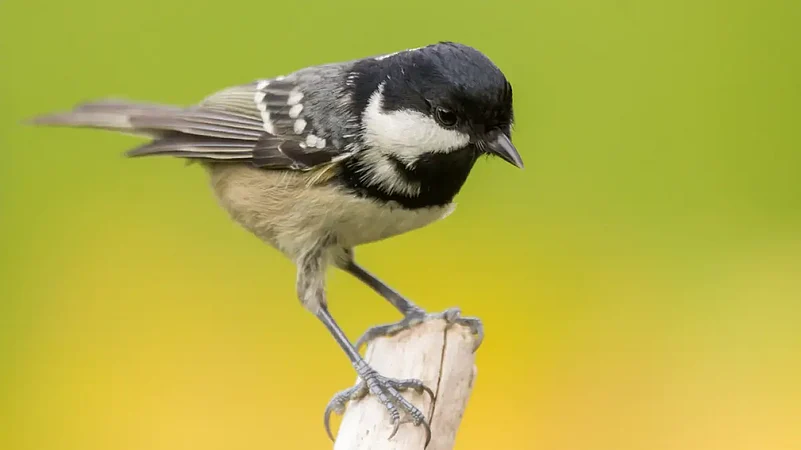Otherwise known for its culture and cuisine, Gujarat is home to wide variety of biodiversity. It the varied ecosystems of the different regions that make it a birdwatcher’s paradise. The many sanctuaries set across the state—near urban destinations and amid rural areas—create a popular birdwatching circuit that is best explored on a driving holiday. Here is a birding trail for an unforgettable birding experience in Gujarat:
Where: Jamnagar
Formerly known as Nawanagar, the city of Jamnagar is said to have been established by Ram Javal, an heir of Lord Krishna, on the banks of rivers Nagmati and Rangmati. It’s home to beautiful lakes and monuments.
Khijadia Bird Sanctuary

The location of this sanctuary—with freshwater lakes on one side and salty marshlands on other—makes it a fine setting for birdwatching. A check dam has helped create a diverse ecosystem, including mangroves, Prosopsis areas, mudflats, salt pans, creeks, forest scrub, sandy beaches, and farmlands; all of these create a haven for more than 220 species of resident and migratory birds. The watch-towers, trails, and paddleboats ensure plenty of sightings. Watch out for endangered species such as Dalmatian pelican, Asian open-bill stork, darter, black-headed ibis, black-necked stork, Eurasian spoon- bill, and Indian skimmer.
Where: Rajkot
The fourth largest city in Gujarat, the capital of the former princely state of Rajkot and of the former Western India States Agency is now an important commercial and industrial centre of Gujarat.
Hingolgadh Nature Education Sanctuary
Surrounded by rainfed arid land on all sides, this small sanctuary is home to chinkara, blue bull, and numerous resident and migratory birds. This ecosystem—dry deciduous thorny forests and savannah type grasslands— helps in groundwater conservation by recharging aquifers. As many as 230 species of birds have been spotted, including the red-vented bulbul, green bee eater, spotted dove, shrike, woodpecker, and Indian roller.
Rampara Wildlife Sanctuary

This reserve forest was once a shooting reserve owned by the erstwhile princely state of Wankaner. The arid shrubby grassland interspersed with woods is the natural habitat of the big antelope and is bordered by hillocks. Apart from the many other mammals, over 130 species of birds are found here, including the partridge, common peafowl, ring dove, large gray babbler, purple sunbird, and yellow- throated sparrow. The lesser florican is rarely seen.
Where: Kutch
India’s wild west is a large expanse of flat tortoise-shaped land. Edged by the Gulf of Kachchh and the Great and Little Ranns, the region has some of the most stunning landscapes in the country—arid sandscapes and white salt deserts. The area is also home to some of the best national parks and wildlife sanctuaries. Base yourself in Bhuj and start exploring the rich and diverse flora and fauna of Kutch.
Chhari Dhand Wetland Reserve, Nakhatrana
Situated near Fulay Village in Nakhatrana taluka, this reserve is the perfect destination for birdlife enthusiasts. Chhari means ‘salty’ and Dhand means ‘shallow wetlands’ in the local language, and these shallow wetlands in the heart of Kutch play home to more than 370 species of birds, including raptors, waders, and larks. Endangered species like the dalmatian pelican, oriental darter, and Indian skimmer can also be spotted. It would be ideal to base yourself in either Dhordo or Hodka villages.
Wild Ass Sanctuary, Little Rann of Kutch

Spread over an area of 4,950 sq km, this sanctuary is one of the last places on earth where the endangered wild ass sub-species Indian wild ass (Khur) can be seen. The white desert terrain and landscape create the perfect setting to set off on birdwatching trips. Try and spot the flamingoes, pelicans, spoonbills, glossy ibis, and painted storks. If you’re lucky, you may sight the houbara bustard, Eurasian marsh harrier, and bee eater.
Kutch Desert Sanctuary, Great Rann
Spread over 7,500 sq km, the largest sanctuary in the state encompasses a true saline desert and is home to the world- famous Flamingo City where thousands of flamingoes nest and breed. Apart from them, there’s a veritable feast for the eyes in the form of pelicans, black-necked storks, cormorant, Indian cormorant, brahmini duck, pintail, spotbill, shoveller, pochard, sandpiper, gulls, terns, stints, and plovers.
Narayan Sarovar & Wildlife Sanctuary, Lakhpat
This sprawling lake on the westernmost edge of India is one of the five holy lakes of Hinduism, along with Mansarovar in Tibet, Pampa in Karnataka, Pushkar in Rajasthan, and Bhubaneswar in Odisha. But for bird lovers, it’s the bird life that matters. The sanctuary hosts 184 bird species, including 19 species of raptors. All three species of bustards—great Indian, houbara and lesser florican—can be spotted. The black partridge, a bird typically found in a desert habitat, can also be seen.
The Great Indian Bustard Sanctuary, Jakhau

Set up in 1992 and also known as the Lala Parjan Sanctuary, this is one of the smallest bird sanctuaries in India—it covers only 2 sq km. Apart from being a thriving breeding ground for the endangered bird, the heaviest flying bird belonging to the avian family of Otididae, the sanctuary is also a habitat for harriers, common cranes, black partridges, sand grouses, black and grey francolins, larks, shrikes, coursers, and plovers. Vulnerable species such as Stoliczka’s bushchat and white-naped tit have also been seen as has the migratory imperial eagle.
















